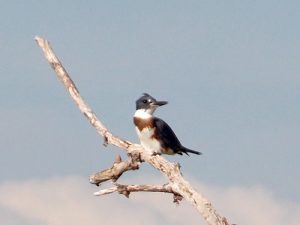
Hampton Roads Virginia is a wonderful birdwatching destination. Birding areas range from swamps and woodlands to coastal beaches and ocean waters.
Parks, Refuges, and Wildlife Management Areas
State and national parks, wildlife refuges, seashores, and wildlife management areas (WMAs) are vital stops for birds. These areas provide refuge from danger, food and water, and a wide range of bird habitats.
The Virginia Department of Game and Inland Fisheries (VDGIF) owns more than 201,000 acres on 39 Wildlife Management Areas (WMAs) located across the Commonwealth, with several located near Hampton Roads.
Some WMAs contain public lakes or access to saltwater estuaries. These areas are popular among birdwatchers, outdoor enthusiasts and others.
Located in southeastern Virginia and northeastern North Carolina, the Great Dismal Swamp National Wildlife Refuge is an outstanding place to enjoy birding. The refuge includes more than 112,000 acres of forested wetlands. The Great Dismal Swamp National Wildlife Refuge headquarters is located in Suffolk, Virginia.
A prime birding trail around Hampton Roads is the Seashore to Cypress Birding Trail. The trail links locations such as First Landing State Park, the Chesapeake Bay Bridge-Tunnel, Back Bay National Wildlife Refuge, False Cape State Park, the Virginia Aquarium & Marine Science Center, and the Great Dismal Swamp National Wildlife Refuge.
Birdwatching Tips
Time of day is important. Many serious birdwatchers know that getting up before dawn comes with the territory. Many species of birds are particularly active in the early morning and again near dusk.
Understanding seasonal events is critical when birdwatching. Important periods for birds include spring and fall migrations, periods of food abundance, mating seasons and other events.
Habitat is important for birdwatching. Most bird species occupy very specific environments and are seldom seen outside of feeding and nesting areas.
Recognizing and locating food sources is essential for birdwatchers. Some types of forage will attract a wide range of birds, while others are more likely to be consumed by specialized feeders.
Birdwatching gear can greatly improve a successful day in the field. Essentials include a field guide, binoculars, digital camera, tripod, sunglasses, sun block, insect repellent and a journal.
Clothing is important on birdwatching. Dressing in layers during the cooler months is a good habit. Weather often changes in the field and either a lack of warm clothing or too much clothing can make birding uncomfortable. Most birdwatchers prefer earth tones and clothing that blends into the background.
Published: May 26, 2011 | Updated: January 31, 2018
Related Information